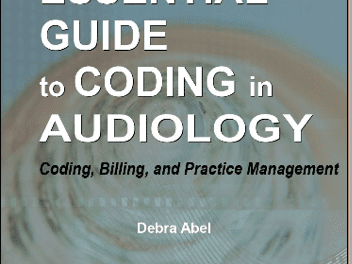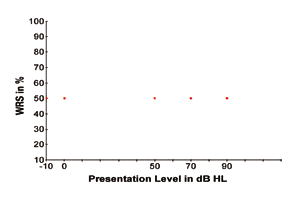A loudness scaling technology has been designed to quickly and accurately measure how a patient perceives loudness, making it possible to more precisely calculate and provide the most comfortable hearing aid fitting. German audiologists using the ACAM-5 (Acousticon Computer-Aided Measurement) have been successfully using this technology to graph each patient’s unique loudness growth curve, measure recruitment, prescribe gain and output for hearing aids, and readjust hearing aids programmed with other systems. The ACAM-5 also provides comprehensive diagnostic audiometry and a versatile HIT box, making it a complete all-in-one system.


Robert Keefer, PhD, is president of Acousticon USA, and Philip Griffin, AuD, is chief audiologist at Now Hear This LLC in Raleigh, NC.
When psychoacoustics researcher Professor O. Heller developed his method for categorical loudness scaling1 during the mid-1980s in Wurzburg, Germany, his procedure was hailed as the premier method for detecting recruitment and for fitting hearing aids with optimum loudness. However, it is ironic that the very thing that elevated his invention to this position is also what prevented its widespread use, causing some to be critical of it.
Professor Heller’s procedure, which was based on data from over 1,000 subjects, was very precise. This made it something of the “gold standard” in loudness scaling. However, because of this, its implementation was also very time-consuming. The procedure involved two steps:
- The use of a verbal scale with seven categories, and
- The use of a subscale with 10 fine subdivisions.
The data provided by this scaling were both accurate and useful, but it took too much time to collect. So, it wasn’t long before others developed simplified versions of Professor Heller’s procedure in order to make the process go faster. However, many of those later adaptations proved unreliable and imprecise, making the resulting hearing aid fittings less than optimal.
Founded in 1984 by audiologist Harald Bonsel, Acousticon began focusing primarily on the development of its audiological measurement technology, called ACAM (Acousticon Computer-Aided Measurement) starting in 1987. The technology has seen improvements through the decades and is now in its fifth generation. The company is particularly known for its all-in-one hearing aid fitting system (ACAM) and its TruTarget™ loudness scaling.2
ACAM® 5 is an integrated software and hardware system designed to help hearing care professionals optimize the patient’s ability to hear in all ambient noise conditions. It does this through automation of percentile analysis and other advanced measurements and fitting processes. The modular design of the system gives the user control over which components he or she desires to use, and makes it possible to use the entire system with all hearing aids made by any manufacturer.

Figure 1. Loudness function at 500 Hz while wearing a hearing aid (blue), compared to normal loudness growth.
ACAM-5 uses percentile analysis, which has been used primarily in hearing aid research and development, as well as in one other special equipment manufacturer’s system. Acousticon integrated this method into its audiological measurement technology to add concrete and significant information regarding the particular digital hearing aid systems’ processing of speech and other sounds. A well-adjusted fitting, which earlier could be achieved only on the basis of experience or by trial and error, can now be optimized quickly, easily, and reliably with the help of detailed analyses. This especially holds true for the improvement of speech recognition with background noise. Percentile analysis also allows the dispensing professional to analyze real speech, music, or any sound—as well as the output of the hearing device over every frequency and loudness level relevant to speech—not just the mean or average response of the speech spectrum. This provision enhances the ability to set target gains in an objective data-driven way and to avoid repeat visits from less-than-satisfied customers. (For more on this subject, see the article by Pettit and Keefer in the May 2011 edition of The Hearing Review.)
ACAM 5 is now available in the United States. The advanced hearing aid fitting system helps dispensing professionals objectively determine not only which hearing aid is best for the patient over the longer term, but also how to fit those hearing aids so the patient can understand speech in nearly all listening environments and enjoy all their favorite music again.
USING PHON CURVES: A ONCE-AND-DONE APPROACH TO LOUDNESS MAPPING
As noted above, loudness scaling itself is certainly nothing new. However, TruTarget™ loudness scaling technology brings a more scientific method to the procedure, and lends practicality to the level of fine tuning that Professor Heller may have envisioned. By making loudness scaling very accurate and quickly performed, this type of precision becomes feasible and indeed valuable for the modern hearing care practice.

Figure 2. ACAM® 5 provides dispensing professionals actual loudness information (not just averaged data) over a wide range of signals (in this case from 250 to 8000 Hz).
TruTarget™ loudness scaling is fast and reliable because Professor Heller’s system is combined with the speed and accuracy of computer-aided statistical analysis. Also, the scaling is done at supra-threshold levels using a specially designed near-field headset connected to the fitting hardware module. Thus, there is no need to travel back and forth to the soundbooth for measurements. Importantly, we believe that TruTarget™ is the only procedure that integrates diagnostic threshold audiometry data with loudness scaling—providing a complete and precise map of each individual patient’s loudness growth.
When a clinician employs TruTarget™ loudness scaling, he or she only needs to use it once to calculate the patient’s individual phon curves that reveal their true MCL and UCL. Combined with measured thresholds, the dispenser can accurately develop target curves for amplification (Figure 1). These curves are more precise than DSL- or NAL-type strategies, which use averages of a subset of subjects, because TruTarget™ takes the individual patient’s unique loudness growth characteristics into account when generating targets.
Using the brain’s perception of loudness to establish the targets is performed once in the very first step of the fitting process. Those targets are then used throughout the subsequent steps of fitting and verifying the fitting.
LOUDNESS PERCEPTION…WITH AND WITHOUT HEARING AIDS
TruTarget™ loudness scaling produces results that show the actual psychoacoustic response of the individual patient’s loudness perception—even if he or she is wearing hearing aids.
The specially designed and patented near-field headphones make this possible. When measuring loudness scaling without hearing aids, dispensing professionals can detect where recruitment starts, and how much gain and output is needed at each frequency to achieve clear and comfortable loudness for each patient. When treating patients who already have hearing aids, clinicians can use TruTarget™ loudness scaling to measure the patient’s perception of the hearing aid’s output to see if the device is providing loudness appropriately across the dynamic range (Figure 2).
SUMMARY
Loudness scaling is a proven process that can provide extremely good and valuable data for adjusting hearing aid systems. However, due to compromises that were necessary due to practicality, loudness scaling has lacked some of the critical precision that makes it so valuable. TruTarget™ loudness scaling is designed to bring back the accuracy and precision envisioned by Professor Heller’s original categorical loudness scaling method, and add the speed and practicality that today’s dispensing professionals require.
Correspondence can be addressed to Dr Keefer at:
References
- Heller O. Hörfeldaudiometrie mit dem Verfahren der Kategorienunterteilung (KU). Psychologische Beiträge. 1985;27:478-493.
- Pettit C, Keefer R. New computer-aided measurement system for hearing aid fitting. Hearing Review. 2011;18(5):38-46. Available at: tinyurl.com/82g98rk





